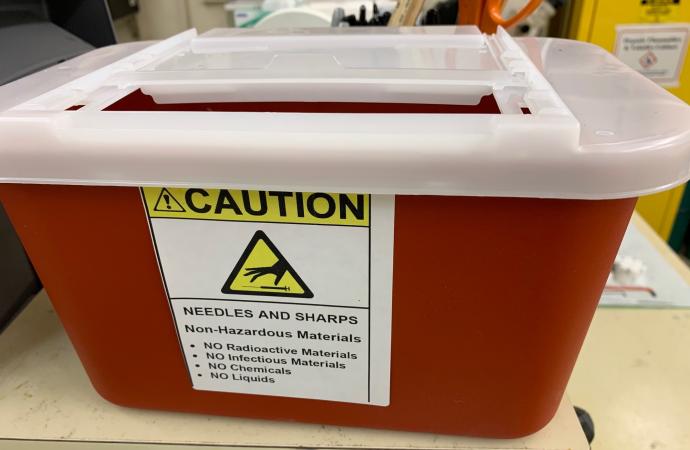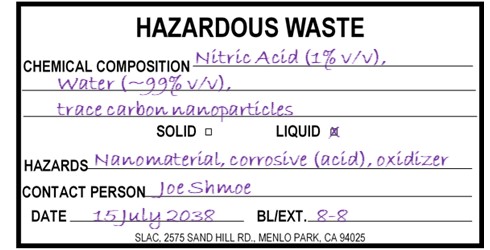Laboratory Waste




All waste produced in the Sample Prep Labs should be appropriately disposed of at SLAC. You are prohibited from transporting waste back to your home institution. Designated areas exist in the labs for sharps, broken glass, and hazardous waste, which must never be disposed of in the trash or sink drains.
Containment: Bottles, jars, and plastic bags are available for containing chemical waste. Place hazardous waste in an appropriately sized container and ensure it is tightly sealed. Separate solid waste from liquid waste (e.g. kimwipes from acid). Do not mix incompatible wastes (e.g. flammable solvent with oxidizer).

Labeling: All hazardous waste must be labeled. Labels are provided in each lab. They must include the following:
1. Chemical Composition & Approximate Concentration(s), especially for mixtures and solutions. It is especially important that you provide approximate concentrations for heavy metals such as lead, mercury, selenium, arsenic, chromium, cadmium, and silver.
2. Physical State (Solid or Liquid)
3. Relevant Hazards
4. Your Name
5. Beam Line or Phone Extension where you can be reached
6. Date of Disposal
Disposal: Once contained and labeled, hazardous waste should be placed into the lab’s hazardous waste cabinet. Waste should be segregated by hazard type into the appropriate bin.
Non-hazardous Lab Waste: Non-hazardous lab waste like proteins, biological buffers, and salts may be eligible for sink disposal. Candidates for sink disposal must be approved by the Lab Manager in advance.
Special Considerations: If you are producing large volumes of waste, contact the Lab Manager before you begin your experiment.




 SLAC National Accelerator Laboratory, Menlo Park, CA Operated by Stanford University for the U.S. Department of Energy Office of Science
SLAC National Accelerator Laboratory, Menlo Park, CA Operated by Stanford University for the U.S. Department of Energy Office of Science